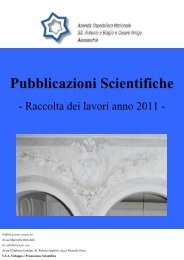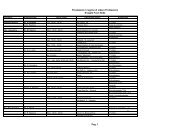Working Paper of Public Health Volume 2012 - Azienda Ospedaliera ...
Working Paper of Public Health Volume 2012 - Azienda Ospedaliera ...
Working Paper of Public Health Volume 2012 - Azienda Ospedaliera ...
You also want an ePaper? Increase the reach of your titles
YUMPU automatically turns print PDFs into web optimized ePapers that Google loves.
<strong>Azienda</strong> <strong>Ospedaliera</strong> Nazionale“SS. Antonio e Biagio e Cesare Arrigo”<strong>Working</strong> <strong>Paper</strong> <strong>of</strong> <strong>Public</strong> <strong>Health</strong>nr. 14/<strong>2012</strong>abilities. For instance, let us consider a hospitalized patient who witnesses a heated clinicaldebate, in which a physician’s view about the patient’s clinical case differs from anotherphysician’s. These heated differences can have severe repercussions on the medical center’satmosphere and this could be due to the discretionary choices <strong>of</strong> politics.Another point to consider is something that is strictly linked to the innovation <strong>of</strong> the proposedmedical treatments. Considering pharmaceutical clinical research, which is the effect <strong>of</strong>innovation on patients’ perception? In other words, when looking at the workers’ effort (i.e.their approach to the clinical case), is a positive correlation between innovative medicaltreatment and patients’ mobility admissible?Human experimentation is a process in which pharmaceutical companies test candidate drugsto collect clinical evidence on them. According to the experimental protocol, physicians areinvolved in this process as medical researchers in order to enroll patients, treat them andcollect the necessary evidence. 6 This means that the above mentioned hypothetical patientmight be asked to participate in a trial, and be treated with an innovative medical treatmentwhose expected effectiveness is higher than that <strong>of</strong> a current treatment. Obviously, in order toinvolve sick people in a risky activity, such as a clinical trial, the best possible performance<strong>of</strong> medical researchers in their relationship with the patients is necessary. In other words,assuming that these physicians wish to develop the trial, for scientific or economic reasons,they will behave in a certain way in order to gain the patients’ trust and involve them in theexperimentation. The medical researcher will appear close to the patients and their disease,giving them a placebo injection through the expectations about the experimental treatment.Emphasizing the good output (patient’s improved health) leads the patients to overestimatethe expected effectiveness and overcome their potential risk aversion. 7reputation, the mobility process could start. This means that a bad reputation <strong>of</strong> the medical center and a good approach <strong>of</strong> asingle physician might lead the patient to believe in the proposed activity and hospitalization will occur (i.e. no mobility).6 Clinical trials are conducted in phases. Each trial phase has a different purpose and helps scientists answer differentquestions. For each step <strong>of</strong> this clinical investigation, a specific ethical opinion from a competent Institutional Review Boardis necessary. This is the single ex-ante regulation within the realm <strong>of</strong> human experimentation. In detail, there are threephases in the pharmaceutical clinical research., According to the National <strong>Health</strong> Institute, they have the following features:“…Studies <strong>of</strong> phase I in which researchers test an experimental drug or treatment in a small group <strong>of</strong> healthy people (20-80)for the first time to evaluate its safety, determine a safe dosage range, and identify side effects... in phase II trials, theexperimental study drug or treatment is given to a larger group <strong>of</strong> people (100-300) to see if it is effective and to furtherevaluate its safety… in phase III trials, the experimental study drug or treatment is given to large groups <strong>of</strong> people (1,000-3,000) to confirm its effectiveness, monitor side effects, compare it to commonly used treatments, and collect informationthat will allow the experimental drug or treatment to be used safely…”. For a deeper analysis, seehttp://www.clinicaltrial.gov.7 According to the Prospect Theory, this emphasizing strategy is also known as framing strategy. Indeed, Kahneman andTversky (1979) suggest that a choice might be affected by the specific framing strategy implemented by someone tostimulate a certain decision. See Sankar (2004) for a specific analysis <strong>of</strong> this framing strategy applied to humanexperimentation.5


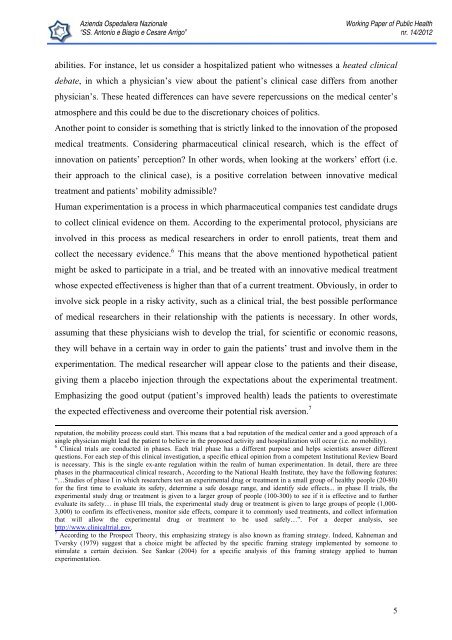
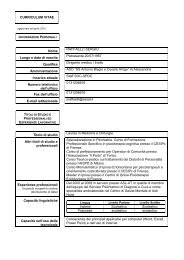
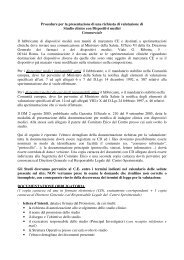

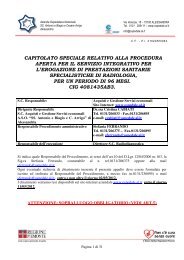
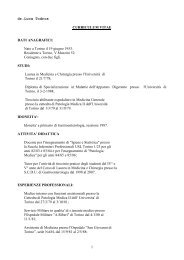
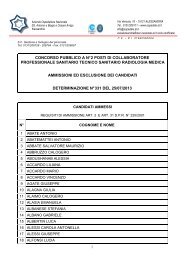

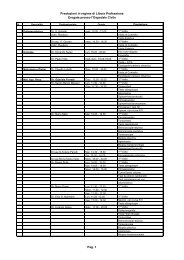


![[torino - 1] lastampa/urc/01 ... 26/10/09 - Azienda ...](https://img.yumpu.com/44058002/1/190x32/torino-1-lastampa-urc-01-26-10-09-azienda-.jpg?quality=85)

